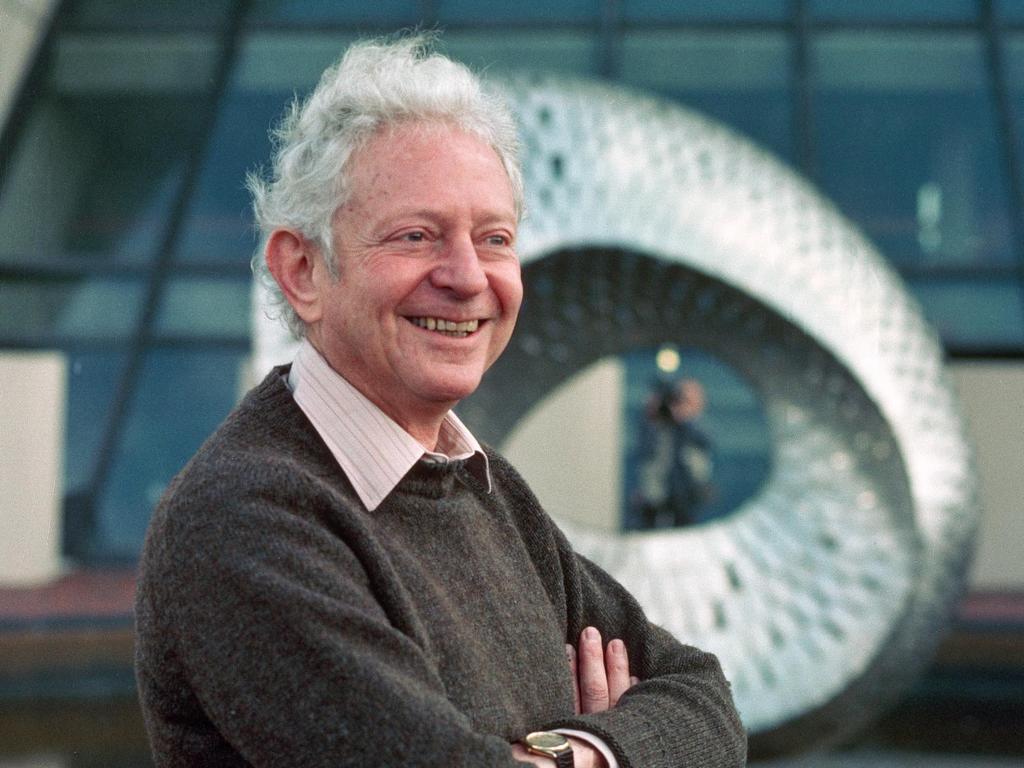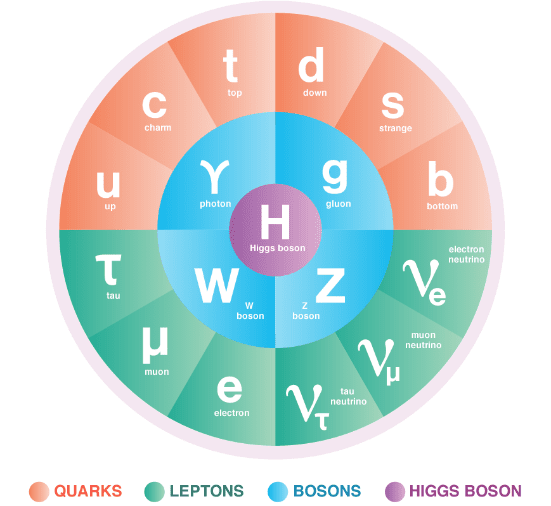
“The Goddamn Particle” was the title Leon Lederman had chosen for his book about the development of quantum mechanics. Lederman, the “Mel Brooks of Physics,” had invented the moniker as a joke. The goddamn particle in question was a bit of mass later to be recognized as the Higgs boson, the final puzzle piece in the array of 17 elementary particles that make up the Standard Model – the stuff from which you and I, and everything in the universe, is made. Somewhere between draft and publication, Lederman’s editor suggested losing the cuss word, and in its final form, the book came out as The God Particle. Lederman smiled at this modestly-revised title, thinking it still perfectly reflected his quirky sense of humor – and would attract needed attention to his book. But he hadn’t counted on offending both the seriously religious, who chafed at the thought that the Almighty’s name should be scrambled into a list of particles, as well as serious physicists, who balked at the admixture, however lighthearted, of religion and science. But the media loved the title, and the name stuck.
Leon Lederman’s Nobel Prize for physics, though, had nothing to do with the Higgs boson, even though as the long-time director of Fermilab near Chicago, the largest particle accelerator in this country, and as an untiring popularizer of science, Lederman helped launch the worldwide effort to track down the Higgs. In The God Particle, Lederman argued passionately for U.S. Congress to fund what should have become the world’s largest particle accelerator, to be built in Texas. In late 1993, Congress killed funding for that project, and the epicenter of particle physics moved overseas to the Large Hadron Collider in Geneva, Switzerland. (Later in this decade, China will build a particle accelerator much larger than the collider in Geneva, which just might make Congress sit up and take notice.) In 2011, Lederman was diagnosed with Alzheimer’s disease and spent his last years in a cabin in Idaho that he had purchased earlier with his Nobel Prize winnings. Not known is whether he was fully aware of the discovery of the Higgs boson the following year at the collider in Geneva. In a sad commentary on the state of U.S. healthcare, Lederman, who passed away recently at age 96, was obliged to sell his Nobel Prize medal to pay his medical bills.
So the goddamn particle did not make Lederman a laureate after all. Instead, he earned his 1988 Nobel Prize for his discovery, 26 years earlier, of the muon neutrino. Lederman, a quite accomplished particle hunter, also discovered the bottom quark at Fermilab in 1995, a particle that had been predicted by Japanese physicist Toshihide Maskawa. (A couple of years ago, we wrote about Toshihide Maskawa, who passed away a few months ago.) The bottom quark has a lifespan of a trillionth of a second, which makes us wonder why it bothers to exist at all as it only seems to complicate both the Standard Model and our understanding of the subatomic world.
If you’ve stayed with us this far, you’re probably still wondering, “So what is a muon neutrino anyway?” Don’t worry, we have that same question. Let’s have a look at the Standard Model, find where the muon neutrino fits in that chart, and see if we can come up with the beginnings of an answer to that question.
A glance at the Standard Model reveals a cumbersome collection of 17 elementary particles. Physicists consider this model incomplete since it does not include the graviton, the particle theorized to be responsible for gravity, nor does the model address dark matter and dark energy, which are thought to account for up to 95% of the matter in the universe. More generally, particle physicists seem dissatisfied with the overall awkwardness of the model (17 is not a particularly elegant number) and keep searching for some underlying theory that would unite all elementary forces and particles under a single equation, a sort of modern version of Einstein’s E=mc². Many physicists believe that such a theory would involve strings. In the meantime, the Standard Model represents our best attempt so far to understand, organize and classify elementary particles.
To simplify things, let’s break down the 17 particles in the Standard Model into four groups. In the first of these, we have the quarks: up, down, charm, strange, top and bottom. Only the up and down quarks, which combine in various ways to form protons and neutrons, are permanent. The four other quarks are short-lived, odd creatures produced in high energy collisions, such as those generated by particle accelerators. Quarks are locked within and can never escape protons and neutrons, which makes determining their mass and energy exceedingly difficult. In the second group are leptons, really just a fancy name for electrons. The three types of leptons are electrons, muons and taus. The muon and the tau, like the heavier quarks, are extremely short-lived (think microseconds or less) and also only result from high-energy collisions. You could think of muons and taus as much heavier versions of the electron. Associated with each electron, muon and tau is a neutrino. The third group in the model contains the force-carrying particles, the “gauge bosons.” These are photons, gluons, and the W and Z bosons, which carry, respectively, the electromagnetic force, the strong nuclear force, and the weak nuclear force. For example, the job of gluons is to “glue” together the quarks encased in protons and neutrons. The hypothetical graviton would join this group of force carriers.
Rounding out the model is the Higgs boson which, if not exactly divine, enjoys something of the status of royalty among particles, seemingly reigning over its peers. The Higgs boson is associated with the Higgs field, which gives mass to other particles. To reflect the importance of the Higgs boson, a newly-redesigned depiction of the Standard Model shows the Higgs at the bullseye of a circular chart, around which are assembled the other fundamental particles.

But now let’s get back to neutrinos. Neutrinos, among the most abundant particles in the universe, were predicted in 1930 by Austrian physicist Wolfgang Pauli but not detected until 1955. Neutrinos are nearly massless, weighing 500,000 times less than electrons, and travel at almost the speed of light. They are produced in stars like our sun as well as in nuclear reactions here on earth. Physicists estimate that 100 trillion neutrinos pass through your body every second. Despite their ubiquitous presence, neutrinos are diabolically difficult to detect. Having described neutrinos as basically nothing, Leon Lederman, in one interview, asked, “How do you go about finding nothing?” The approach used by physicists, such as Lederman, for detecting neutrinos (as well as to learn about other particles) is to study the reams of data collected when beams of particles, produced in particle accelerators, collide against a stationary target. Through complex analysis of clues hidden in these data, physicists, the most brilliant of detectives, measure the masses and energies produced in these collisions and identify the resulting particles.
Lederman’s 1962 discovery of the muon neutrino convinced physicists that the realm of elementary particles was more complex than previously thought. With the muon neutrino, Lederman had added another piece of the larger puzzle of what would evolve into the Standard Model. You might say that the discovery of the muon neutrino helped shape the structure later acquired by the Model.
We can only surmise that Leon Lederman, that would-be standup comedian, would have been thrilled to know that Lake Nona has applied his name to a local street. Were he alive today, maybe Lederman would set up a booth at the intersection of our neighborhood’s Lederman Avenue and Higgs Alley (ironic, huh?) as he did on a midtown Manhattan sidewalk so many years ago. At that booth, Lederman, sitting next to a cardboard sign that read “Ask a Nobel Prize-Winning Physicist,” invited passersby to ask him questions about physics, and the more curious among them readily obliged with serious and thoughtful queries. Could another Nobel laureate have pulled off such a stunt?

The author wishes to thank Dr. Costas Efthimiou, professor of physics at the University of Central Florida, for his help in producing this article.


